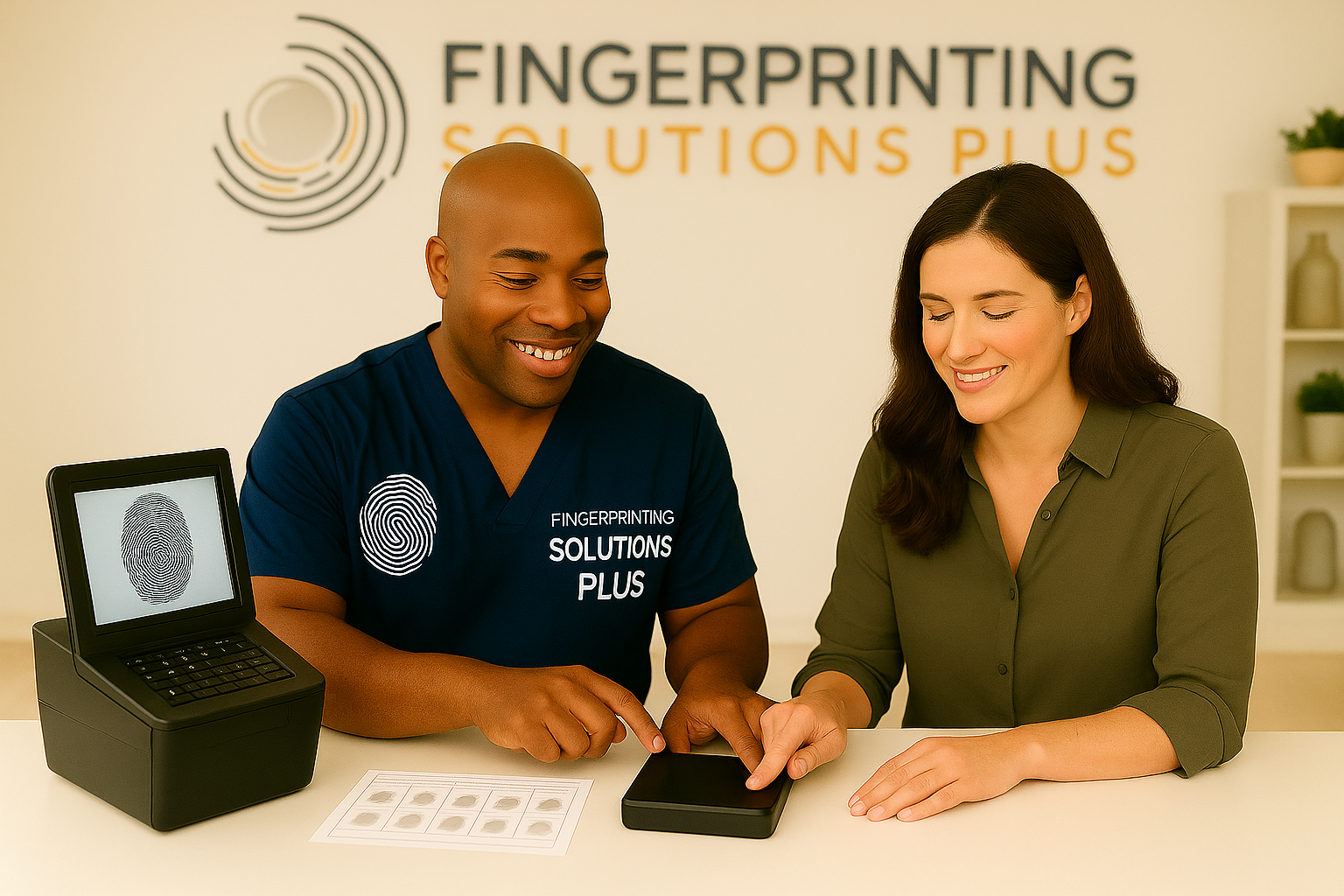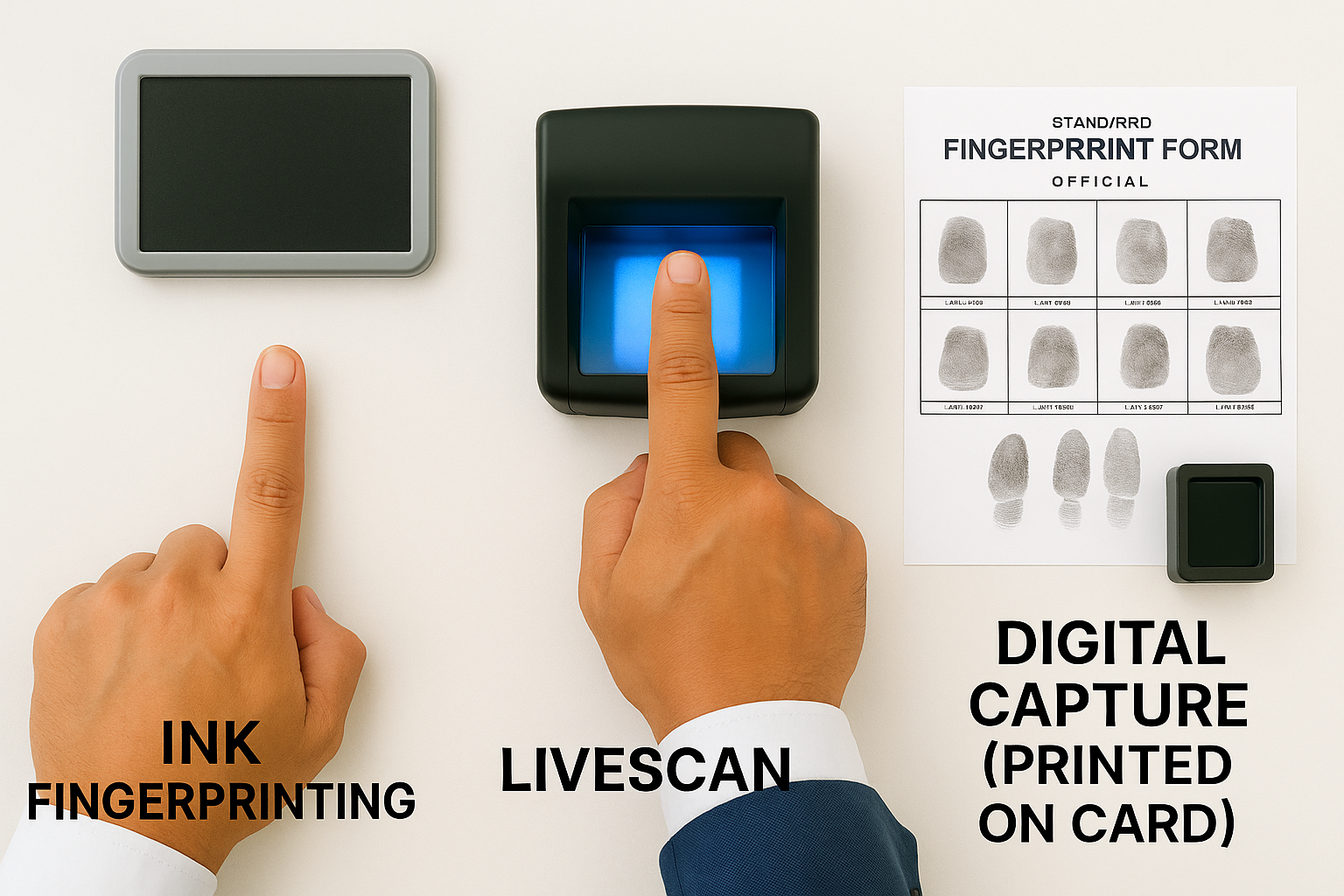Ink vs. Live Scan Fingerprinting: Which Do You Need?
Ink vs. Live Scan vs. Digital Fingerprinting:
Choosing the Right Method
When it comes to fingerprinting, selecting the appropriate method is crucial for ensuring accuracy, compliance, and efficiency. Whether you’re applying for a job, seeking licensure, or undergoing a background check, understanding the distinctions between ink, live scan, and digital fingerprinting can help streamline the process.
What Is Ink Fingerprinting?
Ink fingerprinting is the traditional method where each finger is rolled in ink and pressed onto a fingerprint card, such as the FBI’s FD-258. This technique has been used for decades and remains widely accepted by various institutions.
Advantages:
- Universal Acceptance: Recognized by most agencies, including federal and international bodies.
- No Special Equipment Needed: Simple process without the need for electronic devices.
- Physical Records: Provides a tangible copy that can be stored or mailed as needed.
Considerations:
- Messiness: Involves ink, which can be messy and requires cleanup.
- Potential for Errors: Smudging or improper rolling can lead to illegible prints.
- Longer Processing Time: Physical cards need to be mailed, leading to potential delays.

What Is Live Scan Fingerprinting?
Live scan fingerprinting captures fingerprints electronically using a digital scanner. Instead of ink, your fingers are placed on a glass surface, and the prints are digitally recorded and transmitted to the appropriate agency.
Advantages:
- Speed: Electronic transmission reduces processing time significantly.
- Accuracy: Minimizes errors like smudging, ensuring clearer prints.
- Immediate Feedback: Technicians can retake prints instantly if needed.
Considerations:
- Limited Acceptance: Not all agencies accept electronic submissions; some still require ink cards.
- Cost: May be slightly more expensive due to the technology involved.

What Is Digital Capture and Printing on Cards?
This method involves capturing fingerprints digitally and then printing them onto a physical card. It’s a hybrid approach that combines the accuracy of digital capture with the physical record of ink cards.
Advantages:
- Best of Both Worlds: Combines the clarity of digital capture with the versatility of physical cards.
- Efficiency: Reduces the chance of errors associated with manual inking.
- Versatility: Suitable for agencies that require physical cards but benefit from digital clarity.
Considerations:
- Equipment Needed: Requires specialized printers to transfer digital images onto cards.
- Acceptance: Ensure the receiving agency accepts digitally printed cards.

Which Method Should You Choose?
- Ink Fingerprinting: Opt for this if the requesting agency specifically requires ink cards or if you’re dealing with international processes that mandate traditional methods.
- Live Scan Fingerprinting: Ideal for faster processing, especially when dealing with agencies that accept electronic submissions.
- Digital Capture and Printing: Suitable when you need the accuracy of digital capture but also require a physical card submission.

How Fingerprinting Solutions Plus Can Assist
At Fingerprinting Solutions Plus, we offer:
- In-Office Fingerprinting: Both ink and live scan services are available.
- Mobile Fingerprinting Services: We come to your location for convenience.
- Background Screening Services: Comprehensive checks, both fingerprint-based and non-fingerprint-based.
- Apostille Services: Assistance with document authentication for international use.
- Support for Various Needs: Employment, licensing, adoption, immigration, etc.
Our team ensures professionalism, accuracy, and friendly service, making your fingerprinting experience seamless.
Ready to Get Started?
Whether you’re unsure about the method you need or ready to schedule an appointment, we’re here to help.
Contact us today to discuss your requirements and let our experts guide you.


















